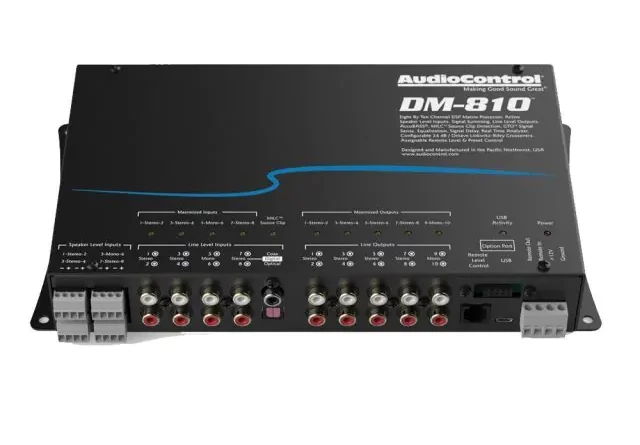The Best OEM Stereo Interface Upgrades
The best OEM stereo interface upgrade products allow you to listen to better quality audio. Music while driving, and high quality sound to play it, is the most emotive of all ways to listen. I will concede that a really good live performance will be emotionally engaging on an utterly higher level. But listening to music? Even the best home HiFi cannot do to you what car audio can, emotionally. This is such a potent effect that we label some music as driving tunes. If it gets to your feels while at the wheel, it qualifies. Be it something that lifts your adrenaline and puts you at risk of licence loss or something slower, more arty. For me, it was a bit of Pink Floyd, the Lake District, dawn and two fifteens with all the trimmings. The memory gives me goosebumps. And I have heard some truly stupidly expensive HiFi systems in Las Vegas at the CES. Nothing did that… it was about place as well as music.
Then, there is that uniquely car audio thing about big bass. Some home cinemas have bass. But the sheer absurdity of bass that can shake your face and make girls swoon, is just car stuff. Quick aside: Some of the most bonkers and deepest and loudest of all home subwoofers are made by JL Audio. They started out making subwoofers for cars. Their Gotham will shake your trousers.
Then, car audio is about self-pleasure for the most part. That is also where factory audio and after market car audio part their ways. The system from your car maker must sound good in every seat. The latest, fanciest OEM audio systems even have speakers in every headrest! But this is about you, so you can make the sound as you desire it. Fabulous fidelity and clarity or mad power – or craziest of all, both. You just need an OEM stereo interface.
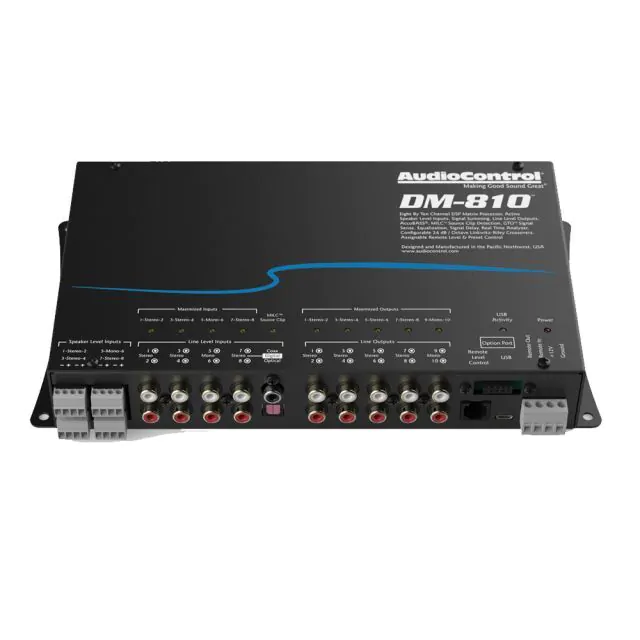
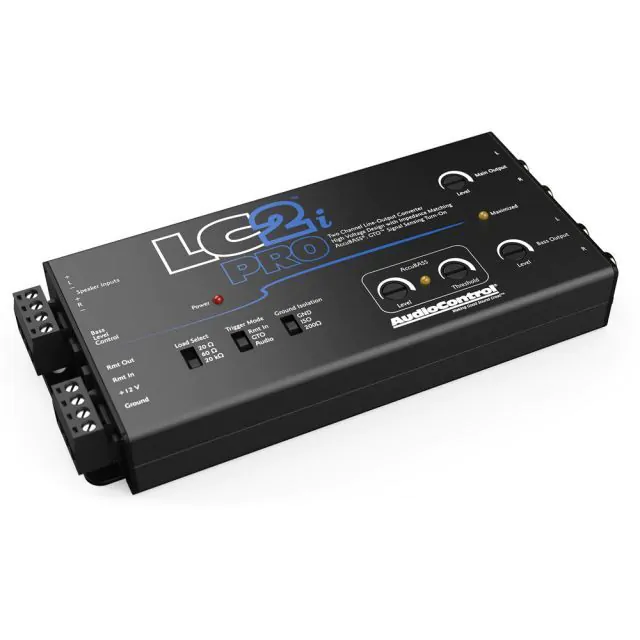
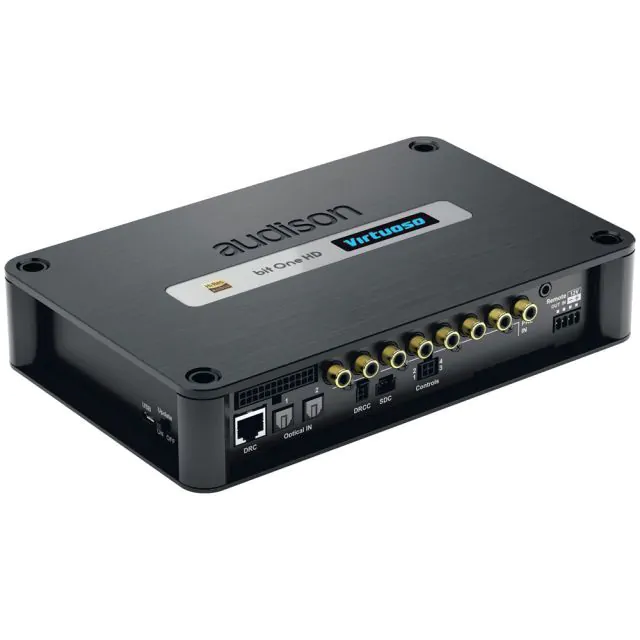
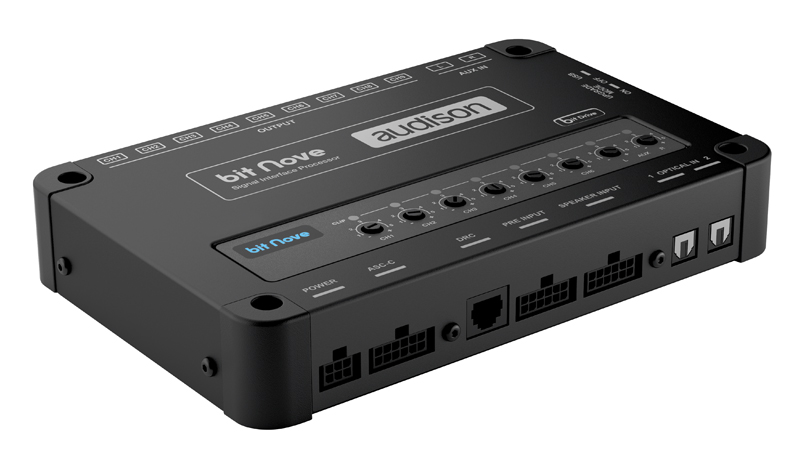
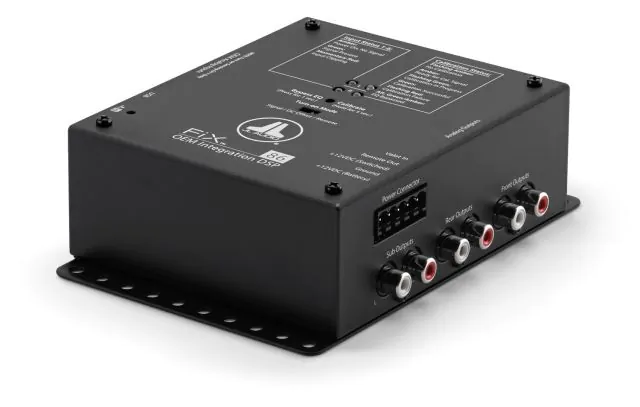
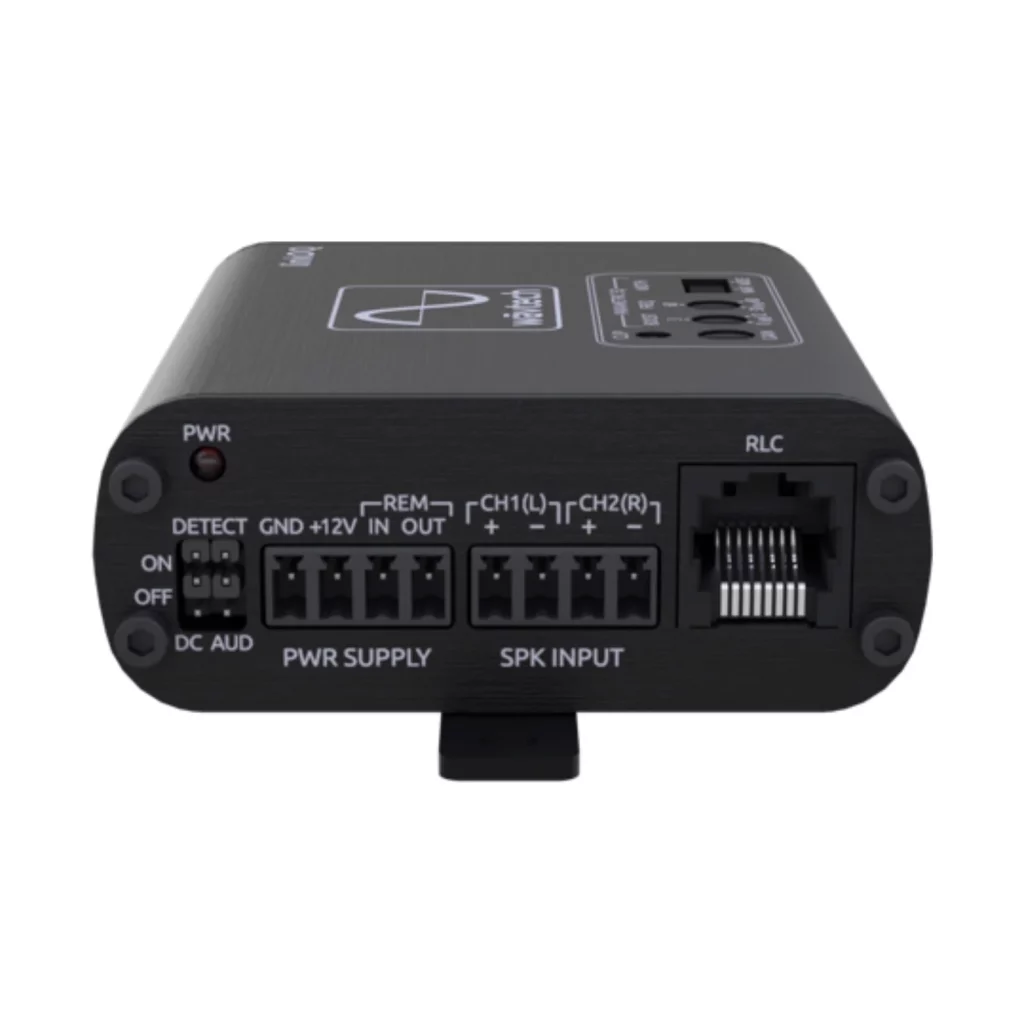
So Why Upgrade?
Car audio from car manufacturers has become so much better than the days of only DIN-sized radios. For one, the days of the theft-driven mobile replacement car radio service are over. If you snap off a screen in a Merc, it isn’t going to work in your tea leaves’ Corsa. So although you have code protection for aftermarket double-DIN units, the fear of theft from cars is back to stuff left on view. That and keyless entry/ignition being a whole-car security disaster.
A big slice of motor advertising has been to show off what the cars can do with telephone connectivity. To brag about the electronics. And many makers are selling premium-branded audio systems with bigger power. Usually a home audio brand, I have tested many of them. And while they have been impressive, and some can get quite loud, none have ever reached the required level. The sound pressure at which you become excited and engaged. The loudness that the ‘net meme about driving and loud music is all about. I call it The Threshold Of Excitement.
And thus, with the above considered, the urge for better or more potent audio is still out there in all its levels. The result can be so epic and enjoyable that really high quality audio equipment for cars still gets made and sold. From speakers that cost four figures a set to the Alpine F#1 Status whole system for £25,000.
These are the devices that will enable you to break free of that OEM audio tyranny – an OEM stereo interface. So you can have whatever grade of sound you want. From simply ‘better/exciting’, to totally sumptuous. You don’t have to put up with what the car maker gave you.
WĀVtech LinkDQ £89.00
A relatively new brand, compared to the old ones but this tiny box is a stonking introduction to OEM integration. It does this by using your factory system’s speaker wires as signal feed and doing awesome things to them. A ‘Line Output Convertor’ or LOC, is way too simple a term as there are clever things going on inside. To start with, the LinkDQ is doing a full-on cuckoo-in-the-nest impersonation of the weird and weedy factory speaker system. Factory systems often have daftly low impedance speakers and squitty little amplifiers. These OEM amps run at a bit of an Ohm rather than four whole ones, into their low impedance speakers. That uses less juice in the car’s electrical system. However the WĀVtech LinkDQ can pretend to be that low impedance speaker system. That way, the onboard amp doesn’t shut down. It’s a common feature for modern OEM integrators.
This product is ‘Son of’ and actually three previous models’ functions rolled into one. Line Output Converter, Line Driver and Bass EQ. The converter is about the basic taking of a speaker wire output and translating it to an RCA signal. The Line Driver is about making that louder at its roots, before the amplifier gets it. The Bass EQ is a single but powerful bass booster. This makes up for the factory equalising the bass output in general, so as to not overload the factory stuff. So you go from weedy and baseless, to a phat signal with balls to send to your audio system. You can even add a remote control knob on a wire as there is a socket awaiting it.
A tiny but potent newbie and all about that OEM stereo interface function.
- Turn on by Audio Signal detect, Remote Switch wire or DC offset, 30Hz to 80Hz single band parametric equaliser
- Input Sensitivity: Speaker level 2-20V/4-40V, Signal level 0.5V to 5.0V RMS
- Output signal Voltage: >10V RMS
- Signal To Noise Ratio of output: Speaker 115dBa, RCA 116dBa

AudioControl LC2i Pro £170.00
Audio Control have always been car and home audio legends. Their analogue twin 31 band equalisers were once what you needed to win car sound offs. Their SA-3055RTA was the measurement device for the industry. And their Epicenter® bass enhancer has never been bettered. That has a circuit that digitally recreates the underlying fundamental bass harmonics then adds them back in. Used badly, it can destroy systems. It makes Dolly Parton’s 9-5 into a bass tune! AccuBASS™ is different. It is controlled by a level knob and a threshold knob. Like the main output RCAs, this has its own LED to indicate the right setting. Some factory systems actively reduce the bass as you crank the volume. AccuBASS™ only kicks in as it senses the factory roll off begin. It’s dead clever and is even patented, and won an award. The Pro version here has the separate bass output RCA as well as the main full range set. You input speaker level (or you can use RCA outputs driven harder) and you get clean audio out, plus bass. Complete with ACR-1 remote control bass knob and twenty feet of cable.
There are two other switch controls on the panel. One is for choosing one of three impedance load ranges of 20 Ohms, 60 Ohms or 20 kOhms and another to select which of the three switch trigger modes you want to use.
Clean and bass-friendly for making your car system heavy from the ground up. AudioControl have always been known for their OEM stereo interfaces.
- Turn on by Audio Signal detect, Remote Switch wire or DC offset, Proprietary AccuBASS™ control
- Input Sensitivity: Speaker level max 400W rms, Signal level max 40V RMS
- Output signal Voltage: >9.5V rms
- Signal To Noise Ratio of output: >110dB

JL Audio Fix 86 £420.00
The WĀVtech LinkDQ provides a good clean line output from a speaker feed. The AudioControl LC2i Pro offers a potent RCA output and a subwoofer RCA feed. The JL Audio Fix 86, though, will offer you a paired set of front, rear and subwoofer RCA outputs. It will connect to each part of your OEM speaker system’s output to do so, retaining OEM fader control. The power wires are on a single plug. You get the regular positive and negative connections plus the trigger wire and a trigger wire output. It also features a wire marked ‘valet’. That’s for a very American reason. Valet parking when you give your keys to someone, and would rather they didn’t pound your audio system while they park or retrieve your car!
There are four sets of socketry to take the JL Audio speaker wire connectors. Two for front, plus rear and even subwoofer stereo speaker wires inputs. And there are two other connectors. One USB port and a phone cable type. This gives you access to the four ten band equalisers and powerful 24-Bit DSP processor. Those front dual inputs can be from mids and tweeters, and even have time delays. Press the ‘calibrate’ button and thirty seconds later, it’s fixed. This will cope with summing and level matching up to a three-way front and two-way rear speaker system. It’s a powerful OEM stereo interface.
USB-connect a laptop PC to download firmware updates and run JL Audio TüN® software. You can see the four equalisers and check out the auto summing and calibration. The JLid port takes a phone wire and connects the optional DRC-100 or DRC-200. The first gives you master volume and the 200 adds subwoofer control.
It’s genius stuff and has some deeply clever technology to tame and fettle even ‘better’ OEM systems.
- Turn on by Audio Signal detect, Remote Switch wire or DC offset, four 10-band equalisers
- Input Sensitivity: 250mV to 30V RMS
- Output signal Voltage:4V RMS
- Signal To Noise Ratio of output: 96dBa

Audison bit Nove DRC £600.00
Audison are Euro high end. They make lovely stuff from affordable to stupefyingly expensive. (How about a Thesis car amplifier for £10,000?) They are very competent at complex systems, with active crossovers and multi-way speakers. They understand the technical stuff. This device is about supplying clean signals to multiple channels of amplifiers in a sophisticated active system. That’s when each amp channel has just one speaker driver to play and gets sent just the right frequencies for that driver. It can take the output from your speakers or it can use RCA signals. You have to wire up RCA socket-to wire adapters to do so, which seems to be about space for sockets. It has an extra RCA auxiliary input and those RCAs are next to the output ones. The real control is carried out via the software and it is powerful. Fabulously adjustable equalisers that are not graphic but parametric. This means you set the frequencies as well as the boost/cut. It has virtual digital active crossovers. They can be set in sixty-eight frequency steps, with 6dB to 24dB slopes and copy different kinds of passives, Linkwitz-Riley or Butterworth. You also get Time Alignment of the highest level of detail.
The innards are happy with 24Bit/48kHz data rates. There are two Toslink inputs. One is for the ‘bit DMI’ Digital Most Interface unit. An optional extra, it connects to the car’s MOST digital bus and outputs a Toslink feed for bit Nove. Audio, video, HDMI and LAN inputs can all be digested by an Audison bit Play HD. This extra unit can make your signals into super clean, distortion-proof optical signals for the other Toslink input.
A real technical tour de force requiring professional set up. I would add the optional DRC AB remote with display for a perfect OEM stereo interface experience.
- Turn on by ART™ Automatic Remote Turn on, Remote Switch wire or DRC remote control. Extensive crossovers, EQ, DSP and time alignment
- Input Sensitivity: Speaker level (master) 3-20V, Signal level (master) 1.2V to 8.0V RMS, (Aux) 0.3V to 5.0V RMS
- Output signal Voltage: 4V RMS
- Signal To Noise Ratio: Master i/p 102dBa, Aux i/p 110dBa, Optical i/p 101.5dBa

AudioControl DM810 £800.00
There are digital Real Time Analysers applicable to the inputs and outputs of the DM810. Like their once-legendary SA-3055 RTA. They are included in the awesome digital facilities of this star unit. Described as a DSP Matrix processor rather than a factory system upgrade unit. Very versatile, it can do everything we have learned about so far and more. The extra clever stuff is accessed with a couple of optional extras. The ACR-3 remote means you can have preset recall and level control. Perfect for those who can’t leave the sound controls alone. One preset for posh, another for mad bass? The AC-BT24, however, is a bluetooth streamer/programmer. It is a small dongle-box that plugs into the ‘Option Port’ like a male deep sea angler fish on his wife. Its wireless DSP programming function is done via the DM Smart DSP™ app (iOS & Android).
The eight inputs, ten outputs DM810 does all the signal summing stuff and has 12dB or 24dB per octave crossovers. The EQ is a full one-third octave 30-band job. There are extra digital inputs, one Toslink optical and a coax, which will be the SPDIF. Named for the companies that devised them, Toshiba Link is the fibre-optic one and Sony-Phillips Digital InterFace is the RCA one. Now you’re an expert. This is a daddy example of the OEM stereo interface.
And unless you really are a technocrat with golden ears and some grasp of audio concepts, you will need an expert to help set it up. The time alignment and even phase correction facilities need to be applied well. Set up right, this will send a beautiful set of signals to your system. With the remote, you can set up different presets. Maybe even one set up to share the music with your passengers, rather than perfect stereo on the driving seat?
- Turn on by GTOTM Signal detect or Remote Switch wire. AccuBASS™ EQ
- Input Sensitivity: Speaker level 40V max, Signal level 8V max, MILC™ Source clipping detection LED
- Output signal Voltage: 10V RMS
- Signal To Noise Ratio not quoted but read the manual. It is stuffed with AudioControl’s droll humour.

Audison bit ONE HD Virtuoso. £1,500.00
Unashamedly aimed at the high end. With the name HD Virtuoso, it is for ‘uncompromising high end systems’. You can enter the world of Audison full Digital Audio HD. There, signals are processed and moved around with the Audison AC/AD link system. There are twelve input channels and thirteen outputs, so you can accept the speaker level inputs from so-called high-end OEM systems. The audio is first de-EQ’d or adjusted to be flat versus the curve of the OEM system. A tweak to the factory system output is often used to get around a shortcoming of cheaper OEM speakers. A short ‘notch filter’ is used to remove BONG sounds through the audio system. When seriously amplified, that door-open bong sound becomes not funny. (I am pretty sure that JL Audio also have this feature too.)
Biddable by the pretty Digital Remote Control Multimedia Play remote controller, this is more than a knob. It is a joystick controller with six buttons and an FL display. It gives you volume, balance, fader and more. The boss OEM stereo interface of them all?
The audio performance figures of the HD Virtuoso are astounding. The main processor is a floating-point SHARC™ type, a variety worth bragging about. Like the best Hi Res audio equipment, the 24Bit/96kHz bit depth and sample rate maxima mean clean audio to bat frequencies. An example of the sheer cunning is the de-phase function. At this level you may be replacing a system with sound enhancement stuff going on. (Probably by Harman!) The phase adjusting majicke used to do this can be ironed out by the Audison bit ONE HD Virtuoso. You can even stop fretting about having every speaker wire connected correctly. It has a high level input polarity check system, complete with automatic correction of any errors.
A paragon of high end control.
- Turn on by Remote Switch wire. Two Toslink inputs, and proprietary connection system for digital use
- Input Sensitivity: Speaker level (master) 5-32V, Signal level (master) 1.3V to 9.0V RMS, (Aux) 0.7V to 5.0V RMS
- Output signal Voltage:4V RMS
- Signal To Noise Ratio: Master i/p 105dBa, Aux i/p 110dBa, Optical i/p 104dBa


